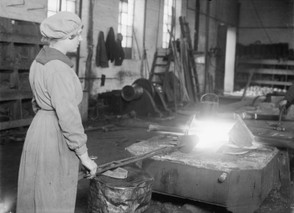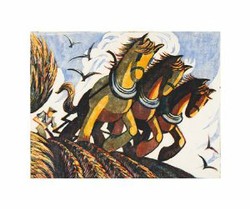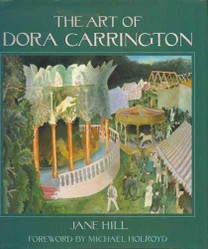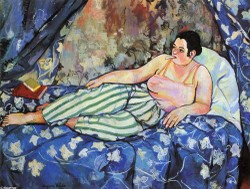Sybil Andrews (1898-1992) found her artistic niche in the medium of the linocut. Whilst much of her work was in praise of pre-industrial, agricultural life, she nevertheless incorporated Cubism, Futurism and Vorticism into her linocuts.
In this way she merged the past with the dynamic present, lending a new energy and power to this often sentimentalised genre.

















 How to Choose a Walking Cane or Stickon 08/01/2014
How to Choose a Walking Cane or Stickon 08/01/2014
 Michael Miller Fabulous Fabric Swatches for Quilting, Crafts etcon 07/02/2014
Michael Miller Fabulous Fabric Swatches for Quilting, Crafts etcon 07/02/2014
 The Drama of Life in the Rock Poolon 06/08/2014
The Drama of Life in the Rock Poolon 06/08/2014
 The Flâneur - Symbol of Modernity in 19th Century Parison 05/09/2014
The Flâneur - Symbol of Modernity in 19th Century Parison 05/09/2014



Comments
Hello EmmaSRose - It's always lovely when someone notices your post! Thank you for your comments - I agree about her mentors. It's good to think of them all working together with new ideas and looking to the future.
Hi Mira - I'm so pleased that you enjoyed this piece. I love her work. :)
cmoneyspinner - Ha ha! You are so right!! Thanks so much for the pin. Sybil was lovely!
I like all the works you presented here. Nice article. I highly enjoyed it. :)
The Grosvenor School was looked on with suspicion because it was innovative and open to modernist ideas? Poor Sybil. If she or one of the other artists had thrown a few bare naked ladies right from the start, bet there wouldn't have a problem at all! :) Subversive huh? I don't see it! I like this lady's bio. She just kept moving forward. This one is going on my ARTISTS I Fancy Pinterest board.
Hello ologsinquito - Yes, she was very influenced by the Italian Futurists who were inspired by modernity - the 'Speed' print is actually by her teacher, Claude Flight, and you can see his influence too.
She had a unique way of looking at things, no doubt about it. I like her "Speed" painting.